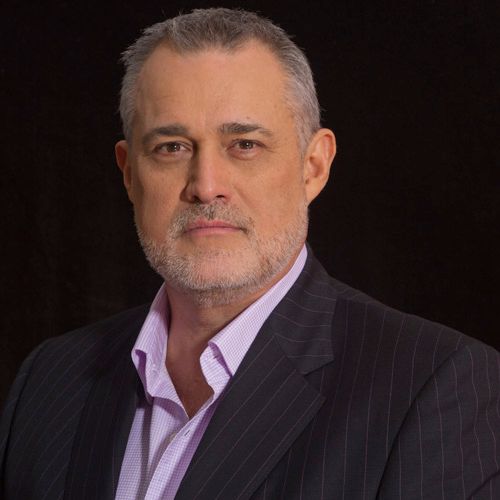Guest Blog by Cathy Fyock, CSP, The Business Book Strategist

You know you need a book as a tool to propel your speaking, coaching, and consulting. You know it will open doors for speaking engagements. It will provide another revenue stream. It will firmly establish you as a thought leader. It will provide you with a new hook for garnering media attention.
So why is it so darn hard?
Even though I’m a book coach and the author of ten books, I don’t like to write! I would much rather be speaking or coaching or consulting. Heck, I’d rather be doing almost anything before I’d want to sit down and write (just short of scrubbing my bathroom floor).
Writing is hard work.
And you’re a busy thought leader.
So how do you make it happen?
In this article I’m going to share the experiences of National Speakers Association colleagues who have focused on some key strategies to get their books completed. These are colleagues, like you, who would rather be speaking and are short on time. We’ll discuss getting strategic, repurposing, using resources, and getting productive.
Getting Strategic
Nancy Giere, past president of Northern California NSA, finds that getting crystal clear on the strategic elements of your book, your course, or your presentation will be the most important elements of creating content for any new project. She suggests that you answer these key questions:
- How will this content help your clients? What problems are you helping your clients solve?
- What is your expertise and what makes you unique?
- What new idea or way of working do you have to share?
- What strategies, tools, processes, and techniques have you created that you can share?
- Who is your target audience? Analyze your audience and create a detailed audience persona.
Begin the process by writing a letter to your reader, not about what you want to tell them, but focusing on what pain and frustration they are experiencing and how your book will help. This shift in focus will get your ego out of the way so that you can come from a point of service.
Repurposing
Amy C. Waninger, author of Network Beyond Bias and member of NSA KY, realized that when she organized her content she had already written 60% of her book. Lois Creamer, member of NSA St. Louis and author of Book More Business, had nearly 100% of the content for her book written when she compiled her targeted blog posts over ten years to create her best-selling book.
Elizabeth Jeffries, RN, CSP, CPAE , author of What Exceptional Executives Need to Know, and member of NSA KY, states, “I started with my Executive Mastery Coaching Process™ that I was actively using to coach healthcare executives and physician leaders. I expanded the process with details of how to coach a team member to get new outcomes, and told real success stories to make the point. I asked for and received over a dozen testimonials from clients I had served with the process, then put it all together and completed the manuscript in six weeks. It was easy and rolled out fast because I had all the information and had actually lived the process!”
Denise Gabel, President-Elect for NSA Northwest and author of Authority, found that starting from her presentation was the best strategy for moving forward. She says that she found every excuse to NOT drag her fingers on the keyboard. She changed her outline countless times before she realized that her “perfect” outline was the speech she had been delivering—“that speech where participants come up and engage with you afterwards.”
She shares that when she arrived at the speaking venue in Salt Lake City, “I simply put my phone on video to record my 45-minute presentation. No images. Just my phone on the table capturing my voice along with the participants’ questions and comments. Then I uploaded that video file to a transcription service like http://rev.com. I used both the human and the computer transcription service. For me, the cheaper computer transcription was sufficient. There were holes in the text, but overall, this process set me free to finish my outline AND create some valuable content for my forthcoming book.
She goes on to add: “Speaking my book has been magic for me—perhaps it will work for you too. I often fire up my Zoom account (discounted with my NSA subscription) and book time with myself to focus on writing. A simple click on record the meeting will produce all the text I need. For me, I find I’m more energized by editing a chunk of text rather than staring at a blank piece of paper. Yes, there are direct speech-to text-features on your phone and laptop. I’ve tampered with those, too.
Denise advises: “Play to your strength—speak your book.”
When I first spoke with Mark Kenny, Strategic Teamwork Expert and member of NSA KY, about re-purposing as a strategy for writing his book, he didn’t think he had anything of value to re-purpose. He shares, “I was wrong! I fell in love with telling stories to make key points. Leveraging my stories turned writing my book from being a struggle to a joy. What was even more surprising is that, after I wrote the first couple of stories and tied them to key points, more stories just started flowing. I added dozens of stories in my book from my own life experiences, and catalogued dozens more that are waiting for the right opportunity. Now I have a whole library of material to leverage for blog posts, keynotes, workshops, or a future book.”
Elaine Dumler, CSP, of NSA Colorado, shares that she’s a visual learner and writer. All three of her books were compilations of ideas edited from about 3,000 interviews. She selected the ones she would use for a particular book and wrote each on a white index card. She arranged everything in a column puzzle format with chapter headings at the top. “Then I was able to redesign the book layout as necessary by physically rearranging the order of the cards as my thought process changed. When everything was pretty much as I wanted it, I’d scoop up a chapter column, take it to the computer and begin the actual writing by going through the order of the cards. I started with the chapter I felt was easiest to write, then went to the next chapter and so on until the body of the book was complete.”
Denise Gabel agrees that having a strong visual is a powerful tool. She created a mock-up of her book so she could touch and feel what success looks like.
Finding Editing Resources
If you don’t think you can write, chances are that you can, but you likely need a really good editor. In fact, I believe that behind every great author is a strong editor!
I turned to Ken Wachsberger, award-winning book editor and author of the international bestseller You’ve Got the Time: How to Write and Publish That Book in You. He’s also VP of Marketing for Michigan NSA.
Ken suggests that to find your content editor, get referrals from author friends. Then look at the editor’s website. What do the testimonials tell you? What personality emerges from the content? What questions arise? Trust is an important element in this new relationship. You’re giving your baby to a stranger.
“Some authors make first contact with the phone but I prefer email. In addition to creating a written history of your communication, it gives you a sample of their writing. If you like what you read and your questions are satisfactorily answered, make your decision.
“While it’s often difficult to give an upfront cost estimate for a complete manuscript, you can ask the editor to review an agreed-upon number of pages or for a set number of hours and send you the result. You can then calculate the average pages per hour and extrapolate a total estimate based on the length of the manuscript.”
Becoming a More Productive Writer
If you want to up your productivity as a writer, your best resource is Allie Pleiter, President of NSA Illinois and author of more than 50 books, including The Chunky Method of Time Management for Writers.
“The first question is whether you are a big chunk or a little chunk writer. Sit down and write. Notice when your energy wanes and you stop being productive. Note your word count. Do this for three to five writing times and then determine your average ‘chunk’ of writing.”
She suggests that once you know your writing productivity (and don’t worry; it will likely improve the more you write) and you also know your optimal time block for writing, you can now block the appropriate time on your work calendar.
“If you know you’re writing a nonfiction book about your area of expertise that is about 32,000 words, now you can do the math and determine how many blocks of time you’ll need to finish the first draft of your manuscript.”
Roger Grannis, President of NSA New England, shares, “There’s something about having a specific, short period of time to write that gets you productive and moving!”
Consider a specific question your reader has. Give yourself five or ten minutes on the timer. Go. Don’t overthink it. Don’t edit. Don’t stop. Just write, write, write. You’ll find that these short, timed writing assignments will help you stop editing as you write (an incredibly unproductive practice) and just let the words flow.
Michelle Villalobos, CSP, is a big proponent of retreats, and so she took her own advice and attended a three-day writing retreat as the way to get her book draft completed. She used the writing time to compile and review content she has already developed and was able to quickly organize her project when away from the daily distractions of writing in her office.
Just Do It
April Callis Birchmeier, CSP, PMP, CCMP™; NSA Michigan Past President and author of READY, Set, Change! Simplify and Accelerate Organizational Change, shares her advice:
“Find or create a virtual writing group. When I was writing my book I was fortunate to find a virtual writing group which met for two hours, twice a week on Zoom. I used the dedicated four hours a week to focus on completing my book. A great bonus is the friendship I’ve developed with other speakers in this group. They cheered me on during my book launch and we’ve had many other book launches as well.”
She adds, “The greatest tip that Cathy gave me was to block time on my calendar for writing and don’t do anything else during that time.”
Natalie Siston, member of NSA Ohio, and author of Let Her Out: Reclaim Who You Have Always Been, shares her advice for getting it done: “With two little kids, a full-time job, and a growing coaching and speaking business, WHEN did I find time to write? I found it in the fringe hours. Those were the pockets of time when my kids were in bed, watching a 22-minute cartoon, or participating in their weekly dance/soccer/swimming class that didn’t require my full attention. These 22-minute pockets resulted in my first book going from concept to completion in six months!”
Denise Gabel summarizes it best: “Don’t just think you can finish your manuscript—say it out loud—yes, I can.”
* * *
Cathy Fyock, Certified Speaking Professional (CSP), is The Business Book Strategist, and works with thought leaders and professionals who want to write a book as a business growth strategy. As the author of ten books, she has also helped more than 180 professionals become published authors. She is a member of National Speakers Association-Kentucky chapter and serves on the Chapter Leadership Council.
This article appeared first in Speaker Magazine.









